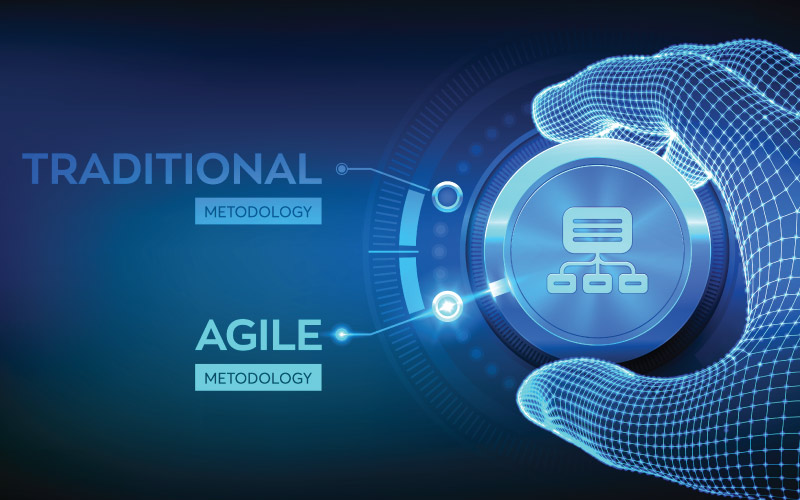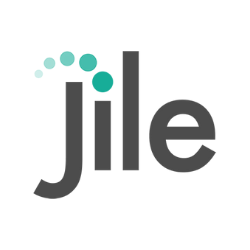7 Key Benefits Of Using The Agile Scrum Methodology

Agile scrum methodology involves step-by-step project development. Let's learn about agile and scrum and the key benefits of using the agile scrum methodology.
Introduction
Almost everything around us is digitalized. There is an alarming rate of innovation in emerging technologies every year. As new ideas and concepts emerge, aged trends and concepts fade away. Waterfall models, for instance, have now become archaic in the project management industry, where new approaches have taken their place.
A few of these characteristics must be present in these new models, such as an emphasis on quality, constant improvements, and short development cycles. The agile model combines all three characteristics. Most software development companies use the agile scrum model due to its high success rate. Approximately 98% of agile projects are successful, based on the 11th annual State of Agile™ survey.
While agile methodology has a wide range of forms, scrum is undoubtedly the most famous. Software development companies can streamline their workflow using scrum, an effective and powerful framework. As a result, workers are more productive and cost-efficient. Complex projects can also benefit from scrum. Almost 58% of companies implementing agile methodologies use the scrum framework.
To gain a complete understanding of agile methodology, an agile enthusiast can enroll in agile online training courses. In addition, many scrum master training courses are available online. You will need to understand the scrum framework to understand agile methodologies.
This blog aims to introduce the concept of agile scrum methodology and the different online platforms where you can learn to become a certified scrum master.
What is Agile?
Software Development Life Cycle (SDLC) is tested and developed continually using agile development methodology. To put it simply, it is a method of completing a project through iterations. As defined and iteratively delivered by the Product Management Institute (PMI), the agile model creates an early and measurable return on investment in a project by focusing on product/system characteristics.
In order to ensure that the client's expectations and goals match your own, a project's iterative nature requires constant client involvement. The agile approach can be viewed as an orientation for approaching a project.
Sprints are about two-to-four weeks long in the agile model. Sprints are used to develop the most important parts of a product. A second sprint is used to build the other parts of the product. As well as providing feedback between sprints, customers and stakeholders can make adjustments easily if necessary.
What is Scrum?
Scrum enables teams engaged in software development to focus on providing business value within the shortest time possible using agile methodology. Through repeated and rapid inspections of the software, this is accomplished.
Scrum development methodology can be regarded as a framework if the agile model is a philosophy. Teams work together, accountability is maintained, and goals are well-defined through iterative progress.
According to Joseph Griffin, a scrum project management methodology describes how the work will be identified, who will identify it, how it will be done, and when it will be completed.
As parameters fluctuate, the scrum framework constantly adapts. As a project progresses, the team members' experiences become increasingly valuable. A team is not an island of knowledge at the beginning of a project. Team members can re-prioritize according to changing requirements and conditions, allowing them to adapt naturally to changing conditions.
Agile Scrum Methodology: What makes it so Effective?

People used to be able to talk in offices freely two years ago, but due to the devastating Coronavirus pandemic, workers have been forced to work from home. Teamwork had to be re-planned in organizations to deal with this challenge. Scrum had a lot to offer during such trying times.
All scrum software development methodologies are said to be based on the agile methodology. A major part of the agile model is also the scrum framework. Agile models can also facilitate recurring tasks. Every team needs to practice the agile model to overcome the effects of locational barriers and maintain an organized mode of work.
Self-organized teams increase productivity, communicate more effectively, and provide transparency and flat hierarchies within these smaller teams. By doing so, each employee is kept up-to-date with all company information.
Agile scrum also has the following characteristics that make it so effective:
- As requirements change, it reacts quickly.
- Meetings are productive and efficient and ensure developers receive assistance when needed.
- As part of the development process, customers, stakeholders, and end users provide feedback.
- By delivering shippable increments early, stakeholders are able to offer feedback.
- Sprints of two to four weeks give the development team a sense of urgency, resulting in increased speed.
7 Key Benefits of Using the Agile Scrum Methodology
1. Customer Satisfaction: For customers, one of the most challenging aspects of software development is that they cannot often appreciate a system's functionality until they can actually see it in action.
Providing customers with working functionality in small increments allows them to see what they are getting incrementally and be confident that what they are getting, represents the functionality they will actually need.
2. Adaptability and Flexibility: It's important to keep in mind that since the requirements (which consist of backlog items, features, and other user stories) are deliberately kept at a high level at the beginning, you still have the flexibility to redefine and re-plan the requirements after each sprint and release, allowing you to adjust the requirements based on the feedback from the end users and customers as they become available.
3. Lower Costs and Risks: According to a study on the use of all the features delivered in the traditional and conventional waterfall projects, most of those features never even made it to the target audience due to feature bloat and scope creep.
It is important to remember that scrum ensures that you prune the backlog diligently after each sprint to quickly eliminate such features (as well as the costs associated with them). Due to these short-time boxes, risks are less likely to materialize during the sprint, thereby addressing the issue of increment delivery and minimizing risks.
4. Innovation and Creativity: Using the scrum development methodology allows integrated teams of designers, developers, testers, and business and functional experts to work together as a team in order to avoid working in silos. Collaboration between disciplines fosters creativity and innovation as a result of this cross-disciplinary approach.
5. Organizational Synergy: By combining skills from different and various disciplines in a cross-cutting ethos of product development, scrum enables team members to leverage their talent as well as knowledge, in addition to the skills that they already possess so that the final outcome integrates the best skills of the business organization, and not just those that are listed on their job profile.
6. Quality Improvement: Using engineering methods such as continuous integration, continuous exploration, test-driven development, continuous delivery, DevOps, and relentless test automation, scrum results in a much higher quality of code, products, and processes compared to other methodologies.
7. Employee Satisfaction: When a project is flexible enough to allow the scope to be adjusted while still delivering results, the challenge of delivering a fixed schedule, fixed scope project with a team doesn't arise.
Rather than spending long hours in front of a computer and repeatedly re-planning and testing functionality, this team is in full control of its operational pace, making employees proud of their work and not under pressure to complete it by an impossible deadline.
Agile Scrum Training: Elements
If you are an agile scrum model enthusiast, there are various online courses available that will allow you to learn agile methods and scrum master techniques. You can also enroll for a certified scrum master course online. In order to make sure that a training course is a good one, here are a few factors you should look out for:
- As part of agile training, the instructor must ensure that the class is interactive and follows the student's learning curve to facilitate the learning process.
- After each class, there should be exercises given to the participants as a way to make the training more engaging. A fellow individual or a group of colleagues should be consulted during the discussion process.
- It should be a fun experience for the trainees during the training.
- For instructors to be effective, they need to share real-world experiences and give examples of those experiences.
Different Roles in Agile Scrum Methodology
The three main roles in the scrum process are the product owner, the scrum master, and the scrum team. As a scrum team, they are all dedicated to completing the project in a timely manner.
- Product Owner: The product owner represents the stakeholder, usually the customer, in the product development process. The product owner is responsible for defining the product expectations, tracking changes made to the product, as well as maintaining the scrum backlog, and continuously updating the detailed list of tasks for the scrum project, in order to ensure that the scrum team is delivering value to the business and the stakeholders.
- Scrum Master: Scrum masters are responsible for facilitating the development process within the scrum team. The scrum master's other responsibilities are to ensure that scrum rules are enforced and applied in a way consistent with what has been agreed with the scrum team every day, as well as having meetings with the scrum team.
- Scrum Team: As the term 'scrum' implies, it is a self-organized team of three to nine individuals who have the ability to carry out actual work, produce deliverables, and tackle problems by having the right business, design, analytical, and development skills. During a sprint, each member of the scrum team performs their own self-administered tasks and is responsible for the outcomes of that sprint.
In addition, the product owner is responsible for prioritizing the goals for each sprint to ensure that the most deliverable and important features are developed in each iteration, based on the value they have for stakeholders.
Scrum masters have many responsibilities, including coaching and motivating their teams, ensuring that sprints run smoothly, and ensuring that they have the best possible working conditions to accomplish their goals and deliver quality results.
Conclusion
The agile scrum methodology enhances stakeholders' team satisfaction, productivity, quality, transparency, and customer satisfaction. Adopting the scrum methodology significantly improves the work environment when team members actively participate. As a result, the product is released early and efficiently without compromising quality.
Thanks for subscribing to our latest blogs, thought leadership and other product updates!
Read our Privacy Notice to know more. You can opt-out of all communications anytime.
